Is Earth Really a Solid?
The Evidence Reexamined
By
Oliver Milatovic
To my mother and Genevive
The author
 Oliver Milatovic earned his BSc in Engineering Geology from the University of the Andes, Venezuela. He worked in the oil industry, analysing geophysical data to assess the petrophysical conditions of the subsurface and point out the places that are likely to contain oil. Also in the laboratory, performing testing of candidate drilling, completion, remedial, treatment or workover fluids; under reservoir conditions. He is a former consultant of environmental issues, ensuring hazards such as subsidence; seismic risks and unstable slopes are identified. Former professor of Geology showing students how to apply academic knowledge and skills to a range of Earth science problems, mainly those related to Civil Engineering. Technical advisor in design and/or improvement of laboratory test procedures for the oil and construction industry. Amateur astronomer. His main interest is the application of geological/engineering knowledge either conventional or cutting-edge, to a wide range of engineering and scientific problems.
Oliver Milatovic earned his BSc in Engineering Geology from the University of the Andes, Venezuela. He worked in the oil industry, analysing geophysical data to assess the petrophysical conditions of the subsurface and point out the places that are likely to contain oil. Also in the laboratory, performing testing of candidate drilling, completion, remedial, treatment or workover fluids; under reservoir conditions. He is a former consultant of environmental issues, ensuring hazards such as subsidence; seismic risks and unstable slopes are identified. Former professor of Geology showing students how to apply academic knowledge and skills to a range of Earth science problems, mainly those related to Civil Engineering. Technical advisor in design and/or improvement of laboratory test procedures for the oil and construction industry. Amateur astronomer. His main interest is the application of geological/engineering knowledge either conventional or cutting-edge, to a wide range of engineering and scientific problems.
To an insightful woman
Come with me, I invite you forth
On a voyage to the centre of the Earth
*
Unravelling whats inside Earth is
like trying to find something pretty much
invisible
*
Trust me, not one but several
truthful ways and solutions
are possible
*
Unbelievable, inconceivable
fantastic they might seem
Nature decided that this must have been
*
But you will be the first
The very first
To quench your thirst
For this new knowledge
that you always dreamed about
*
The current answers are based upon
traditional and obsolete researchers
pretensions of Natures knowledge
*
Errors, uncertainties and arrogance are always present
but they dont want this to acknowledge
*
You may wonder: what is the
reliability/uncertainty of the current
Earths inner model?
*
Now you will see what is wrong and who is right
In the end, you will see the light
On our voyage to the centre of the Earth
Contents
Introduction
Chapter I. Whats real science and scientific approach.
Chapter II. Questioning the validity of the current model of Earths interior.
Chapter III. Revealing the true origin of the Earth and its interior, according to contemporary Astronomy research and new emerging paradigms.
Chapter IV. Polar enigmas and clues to a new understanding of the inner Earth. What is the real cause of geomagnetism and the magnetic field of celestial bodies?
Chapter V. How determining properly, a key physical parameter of Earth, tell us about its interior. A new paradigm of the internal structure of the Earth, emerges.
Sources
Introduction
Truth, bitter truth.
Danton
One of popular science books primary functions is to make what would otherwise be inaccessible, specialist knowledge accessible to the lay reader. A basic level of scientific literacy strikes the right balance between scientific accuracy and universal appeal. Generally, anything that inspires people to be curious about the world and to enjoy the pursuit of knowledge is a pretty great thing, any popular scientific text must accomplish. This is the aim of this book.
However, this is not an ordinary popular science book which talks about science. It is off the beaten path. This book talks science. It is aimed for the layman (and laywoman) either an accountant or a blacksmith. The book was written to be easily understood and technical terms are kept at minimum, though maintaining the scientific rigor of the book. These terms are explained whenever it is necessary. A basic knowledge of high school mathematics by the reader would suffice, especially in chapter five. Some paragraphs in this book were written as introductory lectures so the untrained reader can grasp the basic scientific knowledge necessary when discussing a specific topic.
Despite twenty-first century technology that boggles the mind, the terra firma we take for granted walking around on what we call Earth is a largely unknown entity. Weve been taught to believe its a solid spherical mass with semisolid mantle and a molten iron core. But wheres the actual proof? Without empirical evidence, what conventional science merely postulates as the truth really is nothing more than a model or theory. And what if Earth is not a solid as commonly believed? What if instead it is a spherical thick shell, defying the current academic establishment. Because realistically, based on the previous historic track record, initially any new proposed theories and conclusions about truth and reality were always vehemently resisted and rejected by the established conventions of the day. But gradually as stronger evidence emerges, the truth is supposed to win out over the established false consensus. Indeed, as it will be discussed trough this book, part of current science had become a big magic trick, you cant believe anything you see.
Usually popular science books present the so-called bright side of the scientific endeavour and some of its advocates acquire a cult status. Seldom these popular science books mention the fact that for instance, current physics is burdened by unnecessary pitfalls and owes many of its troubles to unclear or false definitions, inconsistent modelling, untenable assumptions, neglected conditions, carelessly applied mathematics, careless simplifications and misunderstood or even fake experimental results. This embodies the crisis modern science is currently facing. This book emphasizes this trend in regards to the current accepted model of Earths interior.
Given the above, the problem is the inevitable spreading of misinformation. Most of the public is certainly getting a cartoon version of almost everything that science says. Some with sound scientific background might be immune to it. In general, the public tend to give scientists the power by trusting them more than their common-sense. It is rightfully to ask: does popular science books generate an enlightened population or a bunch of misinformed know-it-alls? Average popular science books should be truthful and enlightening so people can read a given science topic and be confident in what they are reading. This book was written with this purpose, aiming to generate debate, influence culture, and inspire future researchers.
This book is divided in five chapters. A brief description of each one is given below. The reader, especially the one with no scientific background is encouraged to thoroughly, digest the first chapter as it explains what science is and how real scientific knowledge is acquired. This enables the reader to keep the scientific cheaters off and comprehend what this book is all about. A complete list of sources for further reading, is added at the end.
Chapter One: Is focused in explaining exactly what is known as science and the only valid way to acquire scientific knowledge: the scientific method, stressing the importance of observables and experiments. Its five parts are briefly discussed with examples. Key concepts such as law, hypothesis and theory, among others are rigorously defined. Mistakes in applying the scientific method as well logical reasoning flaws, that distort the scientific endeavour are highlighted. The importance of a concise language in science and the use of clear and precise concepts to avoid ambiguities and misunderstandings, that are misleading the scientific research are stressed out. Scientific fraud as common practice is described. A brief discussion of the importance in understanding the concept of scientific paradigm and how it hinders the advance of science, from past to present, is included. This chapter explains the old and outdated paradigms still in use and the importance of emerging new ones, that are used to support the alternative view discussed in this book. Finally, there is a description of the current division in the scientific endeavour: one going underground and almost kept off the public (and is related to some points of this book) the other known as mainstream or conventional science, running in universities and colleges; where the public is aware of its developments trough popular science media outlets such as TV, books and magazines.
Next page

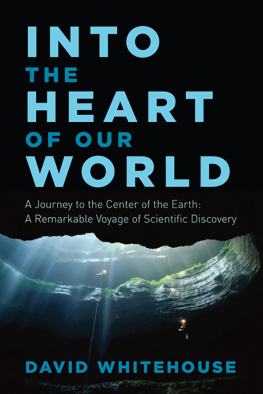
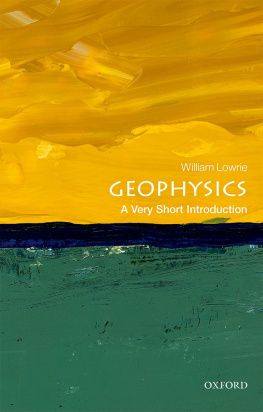
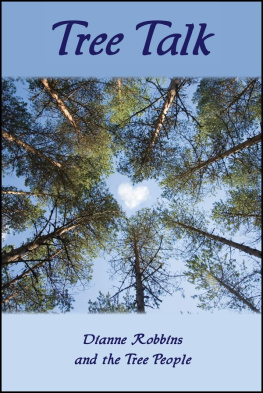
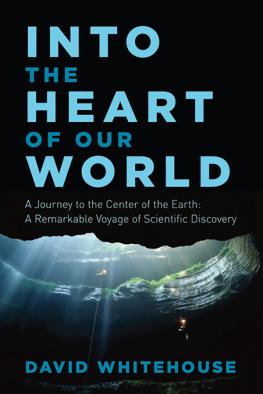
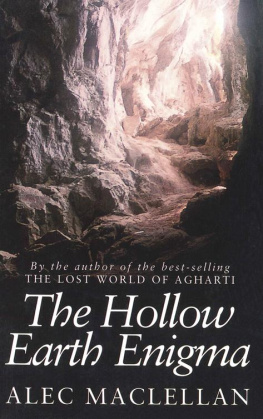

 Oliver Milatovic earned his BSc in Engineering Geology from the University of the Andes, Venezuela. He worked in the oil industry, analysing geophysical data to assess the petrophysical conditions of the subsurface and point out the places that are likely to contain oil. Also in the laboratory, performing testing of candidate drilling, completion, remedial, treatment or workover fluids; under reservoir conditions. He is a former consultant of environmental issues, ensuring hazards such as subsidence; seismic risks and unstable slopes are identified. Former professor of Geology showing students how to apply academic knowledge and skills to a range of Earth science problems, mainly those related to Civil Engineering. Technical advisor in design and/or improvement of laboratory test procedures for the oil and construction industry. Amateur astronomer. His main interest is the application of geological/engineering knowledge either conventional or cutting-edge, to a wide range of engineering and scientific problems.
Oliver Milatovic earned his BSc in Engineering Geology from the University of the Andes, Venezuela. He worked in the oil industry, analysing geophysical data to assess the petrophysical conditions of the subsurface and point out the places that are likely to contain oil. Also in the laboratory, performing testing of candidate drilling, completion, remedial, treatment or workover fluids; under reservoir conditions. He is a former consultant of environmental issues, ensuring hazards such as subsidence; seismic risks and unstable slopes are identified. Former professor of Geology showing students how to apply academic knowledge and skills to a range of Earth science problems, mainly those related to Civil Engineering. Technical advisor in design and/or improvement of laboratory test procedures for the oil and construction industry. Amateur astronomer. His main interest is the application of geological/engineering knowledge either conventional or cutting-edge, to a wide range of engineering and scientific problems.